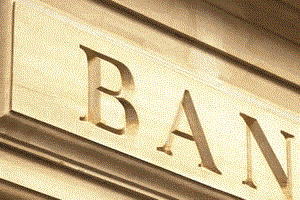First Eagle Value Fund Pattern Recognition Mat Hold
First Eagle pattern recognition tool provides the execution environment for running the Mat Hold recognition and other technical functions against First Eagle. First Eagle value trend is the prevailing direction of the price over some defined period of time. The concept of trend is an important idea in technical analysis, including the analysis of pattern recognition indicators. As with most other technical indicators, the Mat Hold recognition function is designed to identify and follow existing trends. First Eagle momentum indicators are usually used to generate trading rules based on assumptions that First Eagle trends in prices tend to continue for long periods. Please specify Penetration to run this model.
| Symbol |
We are not able to run technical analysis function on this symbol. We either do not have that equity or its historical data is not available at this time. Please try again later.
First Eagle Technical Analysis Modules
Most technical analysis of First Eagle help investors determine whether a current trend will continue and, if not, when it will shift. We provide a combination of tools to recognize potential entry and exit points for First from various momentum indicators to cycle indicators. When you analyze First charts, please remember that the event formation may indicate an entry point for a short seller, and look at other indicators across different periods to confirm that a breakdown or reversion is likely to occur.| Cycle Indicators | ||
| Math Operators | ||
| Math Transform | ||
| Momentum Indicators | ||
| Overlap Studies | ||
| Pattern Recognition | ||
| Price Transform | ||
| Statistic Functions | ||
| Volatility Indicators | ||
| Volume Indicators |
Some investors attempt to determine whether the market's mood is bullish or bearish by monitoring changes in market sentiment. Unlike more traditional methods such as technical analysis, investor sentiment usually refers to the aggregate attitude towards First Eagle in the overall investment community. So, suppose investors can accurately measure the market's sentiment. In that case, they can use it for their benefit. For example, some tools to gauge market sentiment could be utilized using contrarian indexes, First Eagle's short interest history, or implied volatility extrapolated from First Eagle options trading.
Trending Themes
If you are a self-driven investor, you will appreciate our idea-generating investing themes. Our themes help you align your investments inspirations with your core values and are essential building blocks of your portfolios. A typical investing theme is an unweighted collection of up to 20 funds, stocks, ETFs, or cryptocurrencies that are programmatically selected from a pull of equities with common characteristics such as industry and growth potential, volatility, or market segment. | Social Domain Invested few shares | |
 | Adviser Favorites Invested few shares | |
 | Chemicals Invested over 30 shares | |
 | Banking Invested over 30 shares | |
 | Hedge Favorites Invested over 60 shares | |
 | Business Services Invested few shares | |
 | Automobiles and Trucks Invested over 50 shares | |
 | Warren Buffett Holdings Invested few shares | |
 | Driverless Cars Invested over 200 shares | |
 | Momentum Invested few shares | |
 | Macroaxis Picks Invested over 60 shares | |
 | Investor Favorites Invested over 30 shares |
Other Information on Investing in First Mutual Fund
First Eagle financial ratios help investors to determine whether First Mutual Fund is cheap or expensive when compared to a particular measure, such as profits or enterprise value. In other words, they help investors to determine the cost of investment in First with respect to the benefits of owning First Eagle security.
| Idea Analyzer Analyze all characteristics, volatility and risk-adjusted return of Macroaxis ideas | |
| Share Portfolio Track or share privately all of your investments from the convenience of any device | |
| Sectors List of equity sectors categorizing publicly traded companies based on their primary business activities | |
| Portfolio Volatility Check portfolio volatility and analyze historical return density to properly model market risk |